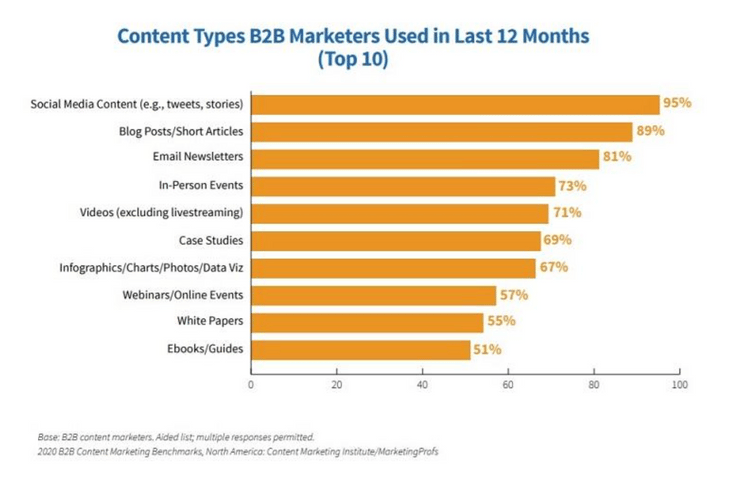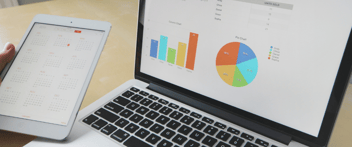Repurposing Content for Maximum Buyer Influence
There are many benefits to consistently delivering digital content to your target audiences. In fact, there really is no downside to it. One of the critical reasons to focus on content marketing in 2020 is its important contribution to revenue attribution. Even marketing automation platforms, like Hubspot, are starting to build native tools for uncovering the influence good content has on contacts associated with won deals. It’s pretty cool.
With these new ways to measure how buyers are interacting with your content, it’s becoming more apparent how important content marketing still is in enabling the purchase journey.
How to Methodically Approach Content Marketing
Keeping up with a consistent schedule for new content creation can be challenging. It takes diligence and creativity to fuel concepts, topics, and ideas for putting compelling content together that your buyer personas will find valuable. The channels for distributing content are also vital to how your content will resonate with a buyer along their purchase journey. It’s imperative to reinforce messaging and positioning across social media, email, website, blog, print, and anywhere else you’re serving up content to your audience.
Note: If you’re wondering about the anatomy of an effective content calendar, check out our post around this here.
Once you have a solid content calendar framework in place, you can begin filling it up with actionable topics and content ideas to start creating! There are numerous ways to structure new content, here are some of the most popular:

But, what should you do when the new ideas start to dry up? This will inevitably happen and that’s OK - it means you’ve done a good job of pumping out relevant content consistently enough that you feel you’ve exhausted all of the most important angles, topics, and themes. This is the point where repurposing becomes a game changer.
Repurposing Your Content
Step 1: Audit Existing Content and Identify High-Performers
If you have the right tools in place (and you should by now - especially if you’ve performed your annual marketing tech stack review) it should be fairly easy to see a glimpse into your high-performing content.
It’s your call as to how you measure high performers - some examples might be:
- Total number of views on the piece
- Total number of downloads of the piece
- Longevity of the performance i.e. the content has been published for over 12 months and leads are still frequently viewing or downloading
- lead-to-opportunity conversion rate for those leads who viewed the piece
Your objective here is understand which content topics are worth revisiting and attempting to push out to your audience a second time.
Step 2: Break Down or Bundle Up Your High-Performers
Let’s think about an example. After completing your audit, you’ve identified an E-book that has performed particularly well against the metric you were using to measure success. It’s a 10-page digital E-book focused on the innovations and trends happening in your industry. Perhaps you originally published this piece for download through a landing page on your website six months ago. How can you utilize what’s inside this E-book again?
Break it Down
Take a critical snippet of the long-form piece, elaborate on the sentiment, and boom - you have a new blog post! Or, extract all of the statistics/figures that live throughout the piece, string them together through a short narrative, bring a designer in, and bam - you have a new infographic!
There are many ways to do this and numerous forms of content that you can develop, like:
- Slideshares
- Videos
- Checklists
- Testimonials or case studies
- The list goes on
Bundle it Up
Once you’ve broken the piece down as outlined above, start to figure out unique ways to bundle the new bites of content together into something new. Perhaps you formulate a kit of assets on that particular topic and the kit includes a blog post, the original e-book, an infographic, and a video. Or, turn it all into a script for a webinar series where you take people through the information over a screenshare.
There are many ways to stack content and enhance your content calendar with long-standing formats:
- Kits
- Guides
- Webinars
- Podcasts Online Courses
- Email Series
Step 3: Infuse New Content into Campaigns Across Your Distribution Channels and Measure Success
Once you’re ready to publish your content, it’ll be important to choose the right channel for distribution and measure its success. As with any content marketing strategy, it’s critical to track how buyers are engaging with each piece to inform future decisions around how to allocate your time and resources.
Final Thoughts
Content marketing can be fun when you take a methodical approach to the ideation & creation. It’s a way to get your creative juices flowing! Start to think about your inventory of existing content and what you could do with it. Repurposing is a must to consistently distribute fresh, new, and inventive content to your audiences.
Use these steps to bring life back into your content calendar and set yourself up for long-term success. For questions or to chat about the state of your current content strategy, ping me here.




